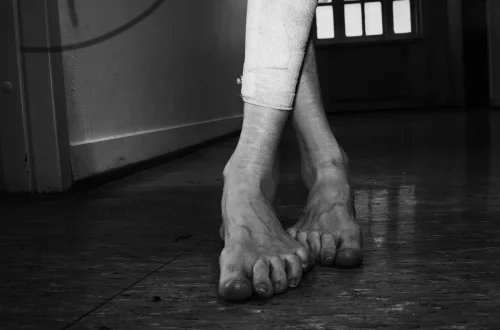
The Essential Guide to Using a Glucose Meter for Cats
Managing a cat’s health is a crucial aspect of responsible pet ownership, and monitoring their blood glucose levels is an essential component for felines diagnosed with diabetes. Just like humans, cats can suffer from fluctuations in blood sugar levels, which can lead to serious health issues if left unchecked. Understanding how to use a glucose meter specifically designed for cats not only helps in managing their diabetes but also empowers cat owners to take proactive steps in ensuring their furry companions lead happy and healthy lives.
While the idea of using a glucose meter may seem daunting, it becomes a manageable task with the right knowledge and tools. Regular monitoring allows for timely adjustments in diet, medication, and overall care, fostering a more stable and comfortable life for your cat. In the following sections, we will explore the importance of glucose monitoring, the types of meters available, how to use them effectively, and tips for interpreting the results.
Understanding Feline Diabetes and the Importance of Monitoring
Feline diabetes mellitus is a condition that arises when a cat’s body either cannot produce enough insulin or cannot effectively use the insulin it produces. This leads to elevated blood glucose levels, which can cause a variety of health problems, including increased thirst, frequent urination, weight loss, and lethargy. If left untreated, diabetes can lead to severe complications, making regular monitoring of blood glucose levels a vital part of a cat’s health routine.
Monitoring blood glucose helps in assessing how well a cat’s diabetes is being managed. For example, if the glucose levels are consistently high, it may indicate that the current treatment plan is not effective and requires adjustment. Conversely, if the levels are too low, this could lead to a hypoglycemic crisis, which is a medical emergency. Therefore, having a glucose meter allows owners to keep a close eye on these fluctuations and respond promptly.
Cats may also exhibit different blood glucose levels throughout the day. Factors such as meal times, activity levels, and stress can affect these readings, making it essential to have a comprehensive understanding of your cat’s normal glucose range. Regular monitoring can provide valuable insights into these patterns, allowing for more informed decisions about diet and medication.
Overall, understanding feline diabetes and the necessity of glucose monitoring is the first step in ensuring the well-being of your cat. With the right tools and knowledge, you can effectively manage your pet’s condition and improve their quality of life.
Selecting the Right Glucose Meter for Your Cat
When it comes to choosing a glucose meter for your cat, several options are available on the market. It is essential to select a device that is specifically designed for veterinary use or one that is suitable for both human and pet use. While human glucose meters can sometimes be used for cats, they may not provide the most accurate readings due to differences in blood composition.
One of the first considerations when selecting a glucose meter is its accuracy. Look for devices that have been clinically validated for use in cats or have received positive reviews from veterinary professionals. Additionally, consider the ease of use; some meters come with user-friendly interfaces and features that simplify the testing process. A backlit display, for instance, can be helpful for taking readings in low-light conditions.
Also, consider the cost of test strips, as this can significantly add to the overall expense of managing your cat’s diabetes. Some meters require proprietary strips that can be more expensive than generic options. Be sure to factor in the long-term costs when making your selection.
Portability is another important factor, especially if you plan to travel or take your cat to the vet frequently. Some meters are compact and come with carrying cases, making them easy to transport. Additionally, some devices offer Bluetooth connectivity, allowing you to track your cat’s glucose readings on your smartphone or tablet, which can be a convenient feature for pet owners who prefer to have digital records.
Ultimately, the right glucose meter is one that fits your specific needs and your cat’s health requirements. Conduct thorough research, consult your veterinarian for recommendations, and consider your budget when making a decision.
How to Properly Use a Glucose Meter for Cats
Using a glucose meter on your cat can initially seem intimidating, but with practice, it can become a routine part of your pet care. First, it is crucial to familiarize yourself with the specific instructions provided by the manufacturer of the glucose meter you choose. Each model may have slight variations in how it operates.
Before taking a reading, ensure that your cat is calm and comfortable. Stress can affect glucose levels, so it may help to perform the test in a quiet environment where your cat feels safe. You might want to consider having a second person to help hold your cat if they tend to fidget or become anxious during the process.
The most common method of obtaining a blood sample from a cat is through the ear. Gently clean the ear flap with an alcohol swab to ensure there is no debris that might interfere with the reading. Then, using a lancing device or a sterile needle, pierce the edge of the ear to obtain a small drop of blood. Apply the blood drop to the test strip inserted into the glucose meter.
Once the reading appears on the meter, record the result, including the date and time, to track changes over time. It is advisable to establish a routine, such as testing at the same times each day, to get a more accurate picture of your cat’s glucose levels.
After the test, be sure to provide your cat with plenty of praise and perhaps a treat, as positive reinforcement can help make the process more pleasant for both of you. Regular testing can become a less stressful experience over time as your cat becomes accustomed to the routine.
Interpreting Glucose Readings and Making Adjustments
Understanding how to interpret your cat’s glucose readings is crucial for effective diabetes management. Generally, normal blood glucose levels for cats range from about 70 to 150 mg/dL. However, the ideal target range may vary based on your veterinarian’s recommendations and your cat’s specific health condition.
If you consistently observe readings that are higher than the recommended range, it may indicate that your cat’s insulin dosage or dietary plan needs adjustment. Conversely, consistently low readings could suggest that your cat is receiving too much insulin, which can lead to hypoglycemia.
It is essential to keep a detailed log of your cat’s glucose levels, including the time of day the readings were taken and any significant events (like changes in diet or stress factors) that could influence the results. This information can be invaluable for your veterinarian when discussing your cat’s treatment plan.
Additionally, fluctuations in readings can occur due to various factors, including feeding time, activity levels, and stress. For instance, a reading taken shortly after your cat has eaten may be higher than one taken a few hours later. Understanding these variances can help you make more informed decisions about your cat’s care.
Regular consultations with your veterinarian are vital for adjusting treatment plans based on glucose readings. Your vet can provide guidance on diet, medication, and lifestyle changes that may be beneficial for your cat. Remember, managing diabetes is a collaborative effort between you, your cat, and your veterinarian.
In conclusion, while using a glucose meter for your cat may seem daunting, it is a critical skill for managing feline diabetes. With the right knowledge and tools, you can significantly enhance your cat’s quality of life.
**Disclaimer**: This article is for informational purposes only and should not be considered medical advice. For any health-related concerns regarding your pet, please consult a veterinarian.




